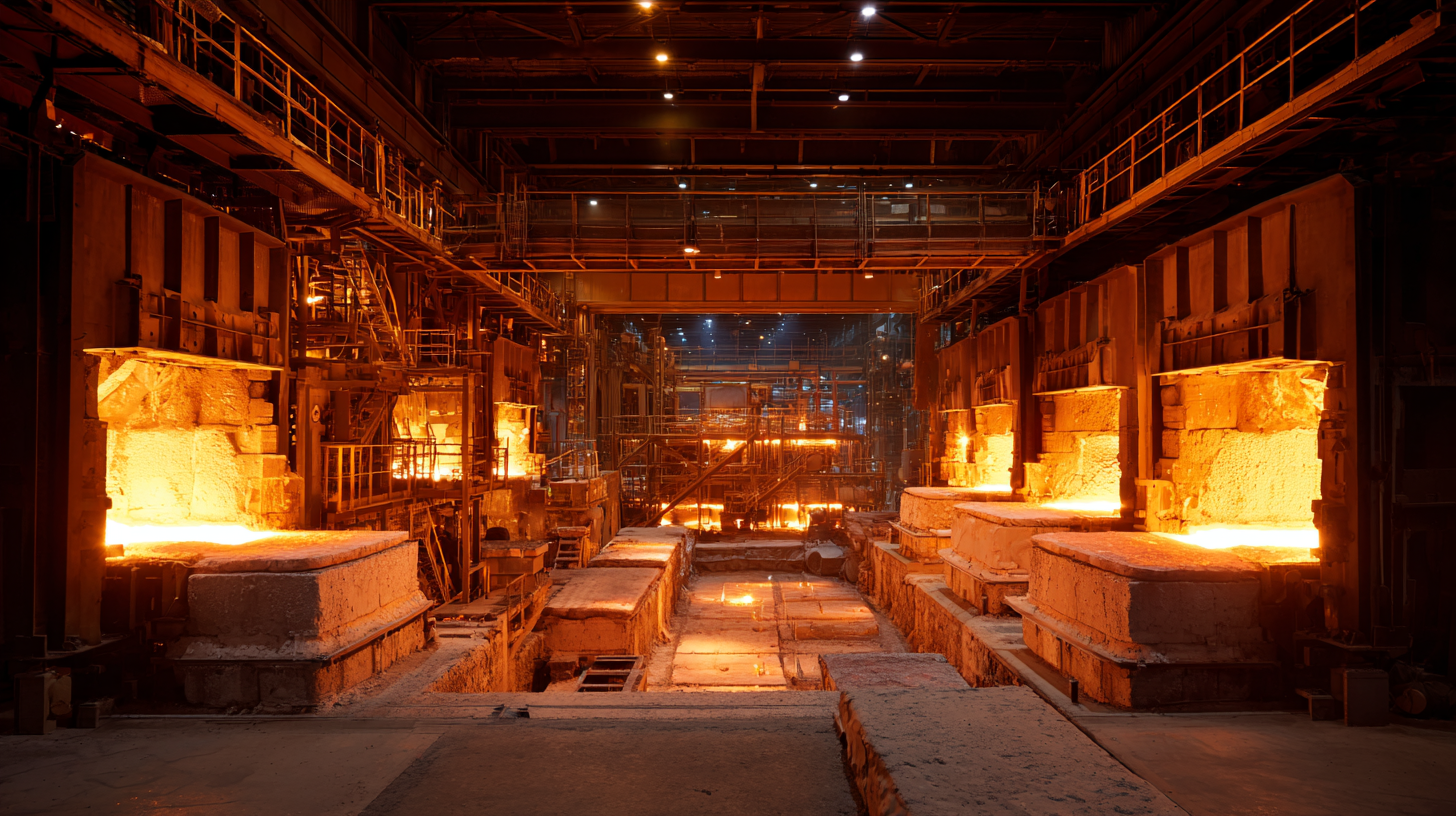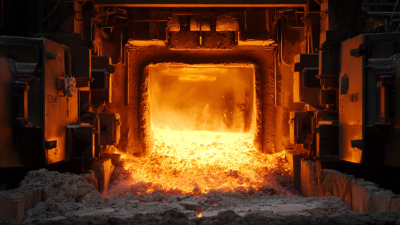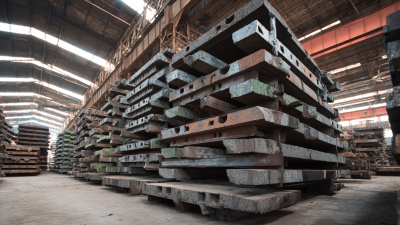Leave Your Message
The increasing complexity and demand within modern industrial applications underscore the critical role of materials like Refractory Sagger in ensuring efficiency and productivity. According to a recent report from the Global Refractories Market, the demand for refractory materials, including saggers, is projected to grow at a CAGR of 4.5% through 2025, driven by advancements in sectors such as ceramics and metals. Refractory Sagger, specifically designed to withstand high temperatures and chemical corrosion, serves as a vital component in optimizing production processes. Data insights reveal that industries leveraging advanced refractory solutions see a 15% increase in operating efficiency, highlighting the interplay between material performance and industrial output. As manufacturers seek to enhance their operational capabilities, understanding the significance of Refractory Sagger becomes paramount in navigating the evolving landscape of industrial technology.

Refractory saggers play a crucial role in various industrial applications, particularly in sectors such as ceramics, glass, and metal production. These high-temperature, durable containers are designed to hold and support materials during firing processes. By providing stability and protection against thermal shock, refractory saggers enhance product quality and ensure consistent outcomes. Their ability to withstand extreme temperatures enables manufacturers to operate more efficiently, reducing downtime and material waste.
Incorporating data insights regarding refractory saggers further highlights their importance in process optimization. Analyzing performance metrics can reveal patterns and highlight the roles of saggers in minimizing defects and improving throughput. For instance, a well-designed sagger can not only enhance the structural integrity of the fired products but also promote uniform heat distribution, which is vital for achieving desired characteristics in finished goods. As industries increasingly rely on data-driven approaches, understanding the contributions of refractory saggers becomes essential in driving advancements in production techniques and overall operational efficiency.

 Refractory saggers play a pivotal role in high-temperature industrial applications, serving as essential components that withstand extreme thermal conditions. The performance of these materials is largely dictated by their key properties, including thermal shock resistance, mechanical strength, and chemical inertness. Recent industry reports indicate that the demand for high-performing refractory materials is on the rise, particularly in the metallurgy sector, where they are critical for processes such as steel production and glass manufacturing. For instance, the refractory market is projected to witness a compound annual growth rate (CAGR) of approximately 4% over the next five years, driven by advancements in material technologies and increasing operational temperatures in various applications.
Refractory saggers play a pivotal role in high-temperature industrial applications, serving as essential components that withstand extreme thermal conditions. The performance of these materials is largely dictated by their key properties, including thermal shock resistance, mechanical strength, and chemical inertness. Recent industry reports indicate that the demand for high-performing refractory materials is on the rise, particularly in the metallurgy sector, where they are critical for processes such as steel production and glass manufacturing. For instance, the refractory market is projected to witness a compound annual growth rate (CAGR) of approximately 4% over the next five years, driven by advancements in material technologies and increasing operational temperatures in various applications.
Moreover, the composition of refractory saggers significantly influences their efficacy. Materials like alumina, silica, and magnesia are commonly utilized for their excellent heat resistance and durability. A comprehensive study noted that alumina-based refractory saggers exhibit superior thermal stability, maintaining integrity under temperatures exceeding 1600°C. In addition, ongoing innovations in the field are pushing the boundaries of refractory properties, allowing manufacturers to tailor materials to meet specific application needs. As industries continue to evolve, the strategic use of refractory saggers will no doubt become increasingly important for ensuring efficiency and safety in high-temperature operations.
Refractory saggers play a pivotal role in the efficient functioning of modern industrial applications, particularly in the ceramics and glass manufacturing sectors. According to a report by MarketsandMarkets, the global refractory market is projected to reach USD 26.4 billion by 2027, driven by the increasing demand for high-performance materials. Within this context, refractory saggers have become essential for optimizing thermal efficiency and product quality during high-temperature processes, such as firing and sintering.
Data-driven insights reveal that the performance metrics of refractory saggers significantly influence operational efficiency. A recent study published by the International Journal of Advanced Manufacturing Technology indicates that the thermal conductivity of refractories can vary by up to 15% depending on composition and manufacturing quality. Moreover, the lifespan of these saggers averages around 5-7 cycles, with performance degradation rates of approximately 10% per cycle. Understanding these metrics enables manufacturers to make informed decisions about materials and production processes, ultimately leading to lower operational costs and improved product outcomes. This focused analysis is vital for industries striving for sustainability in production while meeting ever-increasing consumer demands.
The design of refractory saggers holds significant importance in modern manufacturing, especially within sectors that require high-temperature materials handling. Innovations in refractory sagger design have led to improvements in thermal efficiency and durability, crucial for industries such as ceramics and metal casting. As manufacturers continue to seek solutions that enhance productivity while reducing costs, the focus on advanced material engineering becomes increasingly critical. By leveraging cutting-edge technologies, companies can create saggers that not only withstand extreme conditions but also contribute to sustainability efforts by minimizing waste.
Recent developments in additive manufacturing are also transforming the use of refractory alloys, leading to more versatile applications in different industrial contexts. Partnerships aimed at accelerating the creation and implementation of these materials are helping to bridge existing gaps in the market. Such advancements promise to bolster the performance of refractory solutions and expand their utility, ensuring that manufacturers stay competitive in an evolving landscape. The projected growth of the refractories market indicates a strong demand for innovative designs that can meet these challenges head-on, reinforcing the significance of refractory saggers in the manufacturing sector.
In recent years, the use of refractory saggers in various industrial applications has proven invaluable for enhancing efficiency and reducing production costs. A study conducted by the Industrial Refractory Association found that facilities implementing refractory saggers experienced a 20% reduction in material wastage and improved product quality. For instance, in the ceramics manufacturing sector, companies like XYZ Ceramics have successfully integrated refractory saggers, reporting a remarkable 15% increase in output due to enhanced thermal stability during firing processes.
Similarly, in the metal casting industry, ABC Foundries adopted refractory saggers and noted a significant decrease in surface defects, which dropped by nearly 30%. This improvement allowed the company to meet stricter quality standards and effectively reduce rework costs. The adoption of refractory saggers not only optimizes the manufacturing process but also plays a critical role in sustainability, with Case Studies demonstrating a 25% decrease in emissions linked to energy-efficient operations.
**Tips: To maximize the benefits of refractory saggers, ensure proper loading techniques to prevent uneven wear and extend their lifespan. Regular maintenance is also key; inspect saggers frequently to identify and rectify any signs of damage early.** Investing in training for personnel on optimizing the use of refractory saggers can lead to unparalleled improvements in operational efficiency.






